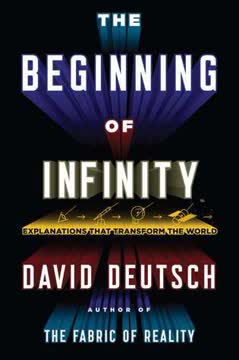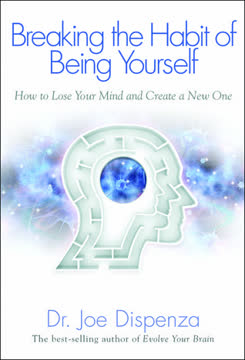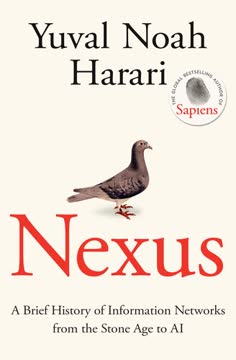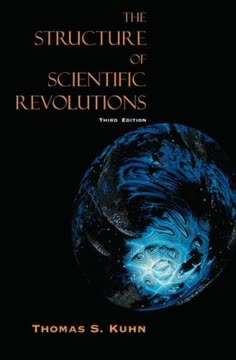Key Takeaways
1. Embrace abundance: Nature upcycles, so can we
Life upcycles.
Nature's model of abundance. The natural world doesn't operate on scarcity but on continuous cycles of growth, decay, and regeneration. Plants convert sunlight into energy, animals consume plants, and their waste nourishes the soil for new growth. This endless cycle of upcycling demonstrates that abundance is possible without depletion.
Human potential for upcycling. By mimicking nature's processes, humans can design systems that create abundance rather than scarcity. This involves:
- Reimagining waste as a valuable resource
- Designing products for multiple life cycles
- Creating closed-loop systems where materials are continuously reused
- Harnessing renewable energy sources
The upcycle concept challenges the notion of limits to growth, suggesting that with intelligent design, we can support a growing population while enhancing the environment.
2. Design for intentional positive impact, not just less harm
The goal of the upcycle is a delightfully diverse, safe, healthy, and just world with clean air, water, soil, and power—economically, equitably, ecologically, and elegantly enjoyed.
Beyond sustainability to regeneration. Traditional environmentalism often focuses on reducing negative impacts. The upcycle approach aims higher, seeking to create systems and products that actively benefit the environment and society. This shift in mindset opens up new possibilities for innovation and positive change.
Intentional design principles:
- Start with clear values and goals for positive impact
- Consider the entire lifecycle of a product or system
- Design for disassembly and reuse from the outset
- Prioritize materials that are safe for biological or technical cycles
- Create products that improve air and water quality
- Develop systems that enhance biodiversity and social equity
By embedding these principles into the design process, we can create a world where human activity enriches rather than depletes our planet.
3. Rethink energy: Renewable sources as catalysts for innovation
Wind equals food.
Renewable energy as a driver of abundance. The authors propose a radical reimagining of our energy systems, seeing renewable sources not just as replacements for fossil fuels, but as catalysts for innovative solutions to multiple challenges. This approach connects seemingly unrelated issues, creating cascading benefits.
Examples of innovative energy solutions:
- Using wind power to grow food in LED-lit greenhouses
- Floating solar panels on reservoirs to reduce water evaporation and generate electricity
- Integrating renewable energy production into existing infrastructure, like railway lines
- Designing buildings that generate more energy than they consume
These solutions demonstrate how rethinking energy can lead to unexpected innovations that address food security, water conservation, and urban development simultaneously.
4. Soil as a battery: Reimagining agriculture and waste management
We can upcycle sewage.
Soil as a crucial resource. The authors frame soil health as a critical issue, comparable to energy in its importance. They argue that by treating soil as a "battery" for storing carbon and nutrients, we can revolutionize agriculture and waste management.
Innovative approaches to soil and waste:
- Viewing human waste as a valuable nutrient source rather than a problem
- Redesigning sewage treatment plants as nutrient recovery facilities
- Using permaculture techniques to restore degraded land
- Implementing urban composting systems to close nutrient loops
By reimagining our relationship with soil and waste, we can create more resilient and productive agricultural systems while addressing pollution and resource scarcity.
5. Celebrate diversity: Upcycling relationships and ecosystems
We want to ask you now to consider celebrating a delightfully diverse world—a much more positive term, indicating pleasure and enjoyment.
Diversity as a source of resilience and innovation. The authors argue that embracing diversity—in ecosystems, cultures, and ideas—is crucial for creating truly sustainable and thriving systems. This approach goes beyond mere tolerance to active celebration and cultivation of differences.
Applying the celebration of diversity:
- In product design: Creating modular systems that can be easily adapted to different needs and contexts
- In urban planning: Integrating diverse habitats and green spaces into city designs
- In business: Fostering diverse teams and perspectives to drive innovation
- In agriculture: Promoting biodiversity and polyculture farming methods
By celebrating diversity, we can create more resilient, adaptive, and creative solutions to complex challenges.
6. The butterfly effect: Small changes lead to cascading benefits
There is no more delightfully serious function in life and in business than to create joy.
The power of small, intentional actions. The authors use the metaphor of the butterfly effect to illustrate how seemingly small design choices can have far-reaching positive impacts. This concept encourages thinking beyond immediate effects to consider long-term and interconnected benefits.
Examples of positive butterfly effects:
- Designing a building with a butterfly hatchery in the lobby, leading to increased community engagement and local biodiversity
- Reimagining packaging to create new recycling streams and business opportunities
- Implementing Cradle to Cradle principles in one product, inspiring changes across an entire industry
This approach emphasizes the importance of intentionality in design, considering how each choice can contribute to larger positive outcomes.
7. Cradle to Cradle: A framework for continuous improvement
Cradle to Cradle is a grounding and coherent foundation, the fulcrum against which we can lean our levers of desirable change.
A holistic approach to design and production. Cradle to Cradle (C2C) provides a comprehensive framework for creating products and systems that are beneficial for both humans and the environment. It emphasizes continuous improvement rather than a fixed end goal.
Key principles of Cradle to Cradle:
- Waste equals food: Designing products to be fully recyclable or biodegradable
- Use current solar income: Relying on renewable energy sources
- Celebrate diversity: Embracing biological, cultural, and conceptual diversity
- Safe and healthy materials: Eliminating toxic substances from production
- Social fairness: Ensuring equitable practices throughout the supply chain
The C2C framework offers a practical approach to implementing upcycle principles across industries and scales.
8. Technical nutrients: Designing for endless reuse and resourcefulness
We call this conventional design "cradle to grave." It aims at only one use, period, after which the product and its materials are discarded, thrown away.
Redefining waste as a resource. The authors introduce the concept of "technical nutrients"—materials designed to circulate continuously in industrial cycles without losing quality. This approach contrasts with traditional "cradle to grave" design, where products are destined for disposal after a single use.
Strategies for implementing technical nutrients:
- Designing products for easy disassembly and material recovery
- Creating material passports to track components through multiple use cycles
- Establishing intelligent material pooling systems for efficient reuse
- Developing leasing models for products to ensure proper reclamation
By treating technical materials as valuable assets rather than disposable commodities, we can create more efficient and sustainable industrial systems.
9. Transforming business: From profit-driven to values-driven
Inspired business leaders together possess the collective power to reverse our environmental woes in a way governments cannot.
A new paradigm for business. The authors argue that businesses can and should be forces for positive change in the world. By integrating environmental and social values into their core operations, companies can drive innovation and create long-term value.
Characteristics of values-driven businesses:
- Starting with clear values and principles, not just profit targets
- Viewing environmental and social challenges as opportunities for innovation
- Investing in long-term sustainability rather than short-term gains
- Collaborating with suppliers and competitors to drive industry-wide improvements
- Measuring success by triple bottom line metrics: people, planet, and profit
This approach positions businesses as powerful agents of positive change, capable of solving global challenges while remaining profitable.
10. Start where you are: Every step towards upcycling counts
Start with good intentions right from the beginning of the design process.
Embracing continuous improvement. The authors emphasize that transitioning to upcycle principles is a journey, not a destination. They encourage individuals and organizations to begin with small steps and continuously improve their practices over time.
Strategies for getting started:
- Assess current practices and identify areas for improvement
- Set clear goals and values to guide decision-making
- Educate yourself and others about upcycle principles
- Start with small, achievable changes and build momentum
- Collaborate with others to share knowledge and resources
- Celebrate progress and learn from setbacks
By focusing on progress rather than perfection, everyone can contribute to creating a more sustainable and abundant world.
Last updated:
FAQ
What's "The Upcycle: Beyond Sustainability--Designing for Abundance" about?
- Focus on Abundance: The book, authored by William McDonough and Michael Braungart, explores the concept of moving beyond sustainability to designing systems that create abundance.
- Cradle to Cradle Philosophy: It builds on the authors' previous work, "Cradle to Cradle," emphasizing the importance of designing products and systems that are regenerative and beneficial to the environment.
- Integration of Design and Ecology: The book discusses how design can integrate with ecological principles to create a world where resources are continuously reused and replenished.
- Practical Examples: It provides real-world examples and case studies of how businesses and communities can implement these principles to achieve economic, ecological, and social benefits.
Why should I read "The Upcycle"?
- Innovative Perspective: The book offers a fresh perspective on sustainability, focusing on creating systems that are not just less harmful but actively beneficial.
- Actionable Insights: It provides practical advice and strategies for individuals, businesses, and policymakers to implement Cradle to Cradle principles.
- Inspiration for Change: The authors aim to inspire readers to think creatively about how they can contribute to a more sustainable and abundant world.
- Comprehensive Approach: It covers a wide range of topics, from energy and materials to social equity, making it relevant for anyone interested in sustainability and design.
What are the key takeaways of "The Upcycle"?
- Design for Abundance: Shift from minimizing harm to creating systems that generate abundance and positive impacts.
- Cradle to Cradle Framework: Emphasize the importance of designing products that can be endlessly reused in biological and technical cycles.
- Value of Intentionality: Highlight the power of setting clear intentions and values to drive innovation and positive change.
- Interconnected Systems: Recognize the interconnectedness of ecological, economic, and social systems and design solutions that benefit all three.
How does "The Upcycle" build on "Cradle to Cradle"?
- Expanded Concepts: While "Cradle to Cradle" introduced the idea of designing for continuous cycles, "The Upcycle" expands on this by focusing on creating abundance.
- Practical Applications: The book provides more detailed examples and case studies of how Cradle to Cradle principles can be applied in various industries.
- Broader Scope: It addresses a wider range of topics, including energy, materials, and social equity, to provide a more comprehensive approach to sustainability.
- Focus on Innovation: The authors emphasize the role of innovation and creativity in achieving a sustainable and abundant future.
What is the Cradle to Cradle philosophy?
- Endless Resourcefulness: The philosophy focuses on designing products and systems that can be endlessly reused in biological and technical cycles.
- Positive Design: It encourages designing with the intention of creating positive impacts on the environment and society.
- Material Health: Emphasizes the importance of using safe and healthy materials that do not harm humans or the environment.
- Renewable Energy: Advocates for the use of renewable energy sources to power human activities and reduce reliance on fossil fuels.
What are some practical examples from "The Upcycle"?
- NASA's Sustainability Base: A building designed to be self-sustaining, using renewable energy and natural resources efficiently.
- Steelcase's Think Chair: A product designed with Cradle to Cradle principles, using safe materials and being easily disassembled for recycling.
- USPS Packaging: The redesign of postal products to eliminate toxic materials and improve recyclability.
- Make It Right Foundation: A project to rebuild homes in New Orleans using Cradle to Cradle principles, resulting in healthier and more sustainable living environments.
How does "The Upcycle" address energy issues?
- Renewable Energy Focus: The book advocates for the use of renewable energy sources like solar and wind to reduce reliance on fossil fuels.
- Energy as a System: It encourages viewing energy as part of an interconnected system, where renewable sources can be used to power various human activities.
- Innovative Solutions: Examples include using wind power to grow food in greenhouses and designing buildings that optimize natural energy flows.
- Economic and Ecological Benefits: Emphasizes the potential for renewable energy to create economic opportunities and reduce environmental impacts.
What is the significance of the "butterfly effect" in "The Upcycle"?
- Small Actions, Big Impact: The butterfly effect illustrates how small design changes can lead to significant positive impacts on the environment and society.
- Design Inspiration: The book uses the metaphor of a butterfly to inspire creative and innovative design solutions that enhance ecological and social systems.
- Community Engagement: Encourages community involvement in creating positive change, as seen in the example of a butterfly hatchery in a building lobby.
- Ripple Effects: Highlights how individual and organizational actions can create a cascade of beneficial effects across industries and communities.
What are the best quotes from "The Upcycle" and what do they mean?
- "The goal of the upcycle is a delightfully diverse, safe, healthy, and just world with clean air, water, soil, and power—economically, equitably, ecologically, and elegantly enjoyed." This quote encapsulates the book's vision of a world where human activities contribute positively to the environment and society.
- "We don’t have an energy problem; we have a materials-in-the-wrong-place problem." This highlights the need to rethink how we use and manage resources, focusing on keeping valuable materials in circulation.
- "Design is the first signal of human intention." Emphasizes the importance of intentionality in design, where every product and system is created with a clear purpose and positive impact in mind.
- "Celebrate diversity." Encourages embracing and promoting diversity in all forms, recognizing its value in creating resilient and adaptable systems.
How can businesses implement the principles from "The Upcycle"?
- Set Clear Intentions: Businesses should start by setting clear intentions and values that align with Cradle to Cradle principles.
- Redesign Products: Focus on redesigning products to be safe, healthy, and endlessly reusable in biological and technical cycles.
- Engage Stakeholders: Involve employees, suppliers, and customers in the process of creating sustainable and abundant systems.
- Measure and Communicate Progress: Track progress towards sustainability goals and communicate achievements to stakeholders to inspire further action.
What role does innovation play in "The Upcycle"?
- Driving Change: Innovation is seen as a key driver of change, enabling the development of new solutions that create abundance and positive impacts.
- Creative Problem-Solving: Encourages thinking outside the box and exploring unconventional solutions to sustainability challenges.
- Collaboration and Experimentation: Highlights the importance of collaboration and experimentation in developing innovative products and systems.
- Continuous Improvement: Emphasizes the need for continuous improvement and adaptation to achieve long-term sustainability goals.
How does "The Upcycle" address social equity?
- Fairness and Justice: The book emphasizes the importance of designing systems that are fair and just for all people, now and in the future.
- Intergenerational Generosity: Encourages designing with future generations in mind, ensuring that they inherit a world of abundance and opportunity.
- Community Involvement: Highlights the role of communities in creating positive change and the importance of engaging diverse stakeholders in the process.
- Equitable Access: Advocates for equitable access to resources and opportunities, ensuring that all people can benefit from sustainable development.
Review Summary
The Upcycle presents a positive vision for sustainable design, advocating for products and systems that regenerate rather than merely reduce harm. Reviewers appreciate the optimistic approach and practical examples, but some find the writing repetitive and the ideas overly idealistic. Critics argue it glosses over economic realities and regulations' importance. While many praise the book's innovative thinking, others see it as a rehash of the authors' previous work. Overall, readers value the fresh perspective on sustainability but have mixed feelings about its execution and practicality.
Similar Books







Download PDF
Download EPUB
.epub digital book format is ideal for reading ebooks on phones, tablets, and e-readers.




